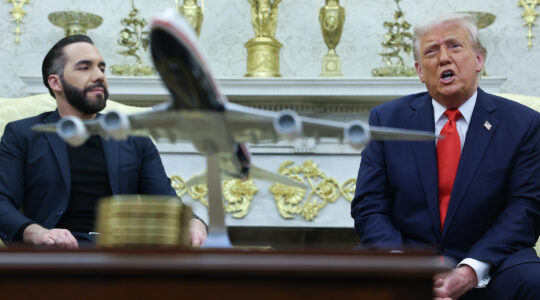(JTA) — The chief rabbi of Lithuania appealed to authorities to prevent the excavation of a mass grave of Holocaust victims in the country’s north.
Rabbi Chaim Burshtein issued the statement Tuesday about the mass grave discovered this week during road construction work in Siauliai, a city located 120 miles northwest of Vilnius, Lithuania’s capital.
“Please halt all disturbance and moving of these human remains,” Burshtein wrote in reference to the work, which he called “the humiliation of the excavation of the human remains of hundreds of people from the Holocaust-era mass-murder grave uncovered this week.”
Originally written in Russian, the statement was translated to English and reproduced by Dovid Katz, an American scholar of Yiddish who runs the defendinghistory.com website on Jewish issues in Lithuania.
Though some human remains were unearthed during construction, a forensic excavation has not yet begun, though a local government commission gave its approval for one on Monday, the Delfi news agency reported.
“It’s been decided to excavate the remains, do anthropological tests and then rebury them and also mark this place,” archaeologist Audrone Sapaite, who is in charge of the investigation, told the BNS news agency. She said that the remains of 40 people were found at the burial site. In all, approximately 700 people shot dead by the Nazis were buried there. The reports by BNS and Delfi did not mention Jews.
According to halachah, or traditional Jewish law, Jewish burial sites are not to be disturbed unless there is danger to the dignity of the dead or other special reasons. For this reason, archaeologists’ desire to conduct forensic tests on mass graves has prompted fierce opposition by rabbinical groups throughout Eastern Europe.
Before World War II, Siauliai was home to some 6,600 Jews, according to the Yad Vashem Holocaust museum. Many escaped to the Soviet Union, but the Nazis and Lithuanian collaborators murdered hundreds of those who stayed in 1941 and in later mass killings. Some Jews from the city were conscripted to forced labor.
According to Sapaite, the bodies found in the mass grave belonged to “prisoners of various nationalities.”
JTA has documented Jewish history in real-time for over a century. Keep our journalism strong by joining us in supporting independent, award-winning reporting.





